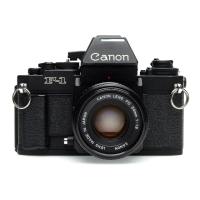60 CHAPTER 4 Teach Your Camera New Tricks
brightness differences between distant pixels. This technique results in
good local contrast and is well suited for images with high contrast. The
images usually look crisper than the ones created with global tone
mapping because local structures are emphasized. When overdone,
however, artifacts such as halos can become visible.
Most of the established image editors such as Photoshop, Paintshop Pro,
and Picture Window support the creation of HDR and DRI images. For seri-
ous HDR work, however, we recommend a specialized HDR composer such
as the free Picturenaut (Windows), or HDR PhotoStudio, Hydra (Mac only),
Photomatix Pro, FDRTools Advanced, or Dynamic Photo HDR. For an example,
please see Figure 6-1.
4.6.3 Focus stacking
Depth of Field ( DOF) is often a problem in photography. Only a distance
range within the image is sharp, while objects outside that area are blurred.
In particular, telephoto shots, macro work, and tabletop photography are
hampered by this problem. The traditional remedy is to stop down (or, in
the case of view camera and tabletop photography, to tilt the camera’s
back). Remember Group f/64—Ansel Adams and friends? The name was
derived from the fact that you had to stop down the large view cameras to
f/64 to obtain sharpness from near to far. Large cameras with long focal
lengths are, in fact, more affected by this problem than small cameras with
short focal lengths.
Nevertheless, small cameras also have their problems. If they have a
diaphragm, you cannot (and should not) stop down too much. Lenses with
short focal lengths are subject to diffraction problems when stopped down
too much. Apertures such as f/64 are definitely out of the question. There-
fore, compact cameras usually can only be stopped down to f/16. Many
small cameras don’t have a diaphragm at all, but use a neutral density ( ND)
filter in case the scene is too bright. So the camera is always working at
maximum aperture with the lowest possible depth of field (DOF).
Focus stacking is a technique used to solve DOF problems. Images taken
with varying subject distances are combined in such a way that the sharp
areas from the single images are visible and the unsharp areas are invisible.
The result is a composite image with a very large DOF. This technique is
especially popular in macro photography.
The images can be combined manually by masking the unsharp areas
of each image and then stacking the images together. However, the results
are often unsatisfying because the transitions are not good. Heavy retouch-
ing is required. A better option is to use specialized programs, so-called
focus stackers, for this task. Programs such as the free command line

